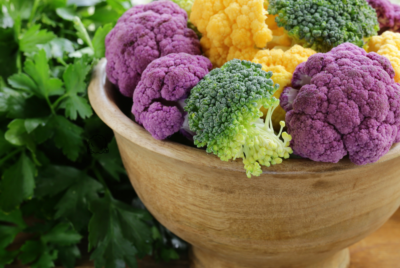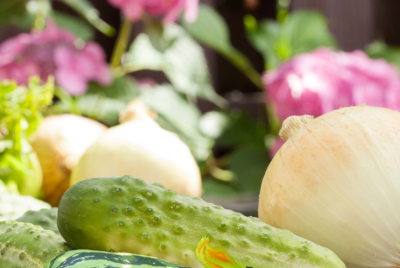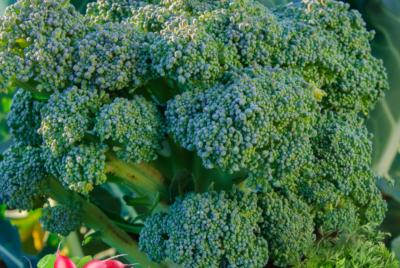Zinnia Companion Plants
Bring Beauty And Pollinators To Your Garden With Zinnia Companion Planting Strategies
Most gardeners know the importance of attracting pollinators to their gardens, and one of the best ways to do so is through companion planting. Zinnias, with their vibrant colors and ability to attract butterflies and bees, are a key player in this strategy. By strategically planting zinnias alongside other beneficial plants, you can create a beautiful and pollinator-friendly garden that will thrive throughout the season. Learn how to incorporate zinnias into your garden successfully with these companion planting strategies!
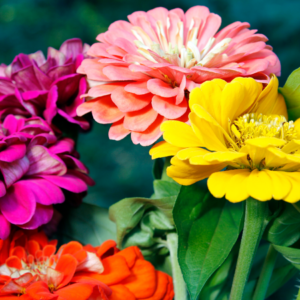
Key Takeaways:
- Zinnias attract pollinators: Zinnias are not only beautiful but also attract bees, butterflies, and other pollinators to your garden.
- Companion planting: Pairing zinnias with other plants like marigolds, sunflowers, and lavender can enhance the beauty and diversity of your garden.
- Deter pests: Zinnias are known to deter certain pests, making them a beneficial companion plant for vegetables and herbs.
- Colorful variety: Zinnias come in a wide range of vibrant colors, allowing you to create stunning visual displays in your garden.
- Low maintenance: Zinnias are easy to grow and require minimal care, making them a great choice for gardeners of all skill levels.
Why Zinnias Are Perfect for Companion Planting
Benefits of Growing Zinnias
A garden filled with vibrant zinnias not only adds a pop of color but also brings a plethora of benefits. Zinnias are known for their low maintenance nature, making them perfect for busy gardeners. These flowers attract butterflies and beneficial insects, adding a touch of whimsy and natural pest control to your garden.
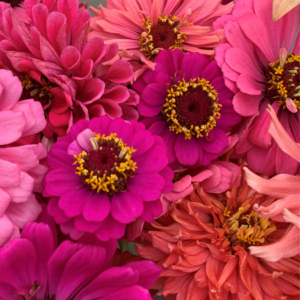
Zinnias and Pollinators: A Love Story
To understand the connection between zinnias and pollinators, one simply needs to observe nature’s magic at work. Zinnias, with their brightly colored and sweet-scented blooms, act as a beacon for pollinators such as bees, butterflies, and hummingbirds. The mutual attraction between zinnias and pollinators creates a harmonious ecosystem in your garden.
For zinnias, the presence of pollinators is crucial for their reproduction. Pollinators help transfer pollen from one zinnia flower to another, ensuring the continuation of their vibrant blooms. By attracting these pollinators, zinnias not only ensure their survival but also contribute to the overall health of your garden ecosystem.
Zinnia Companion Plants – Planning Your Companion Planting Strategy
Choosing Companion Plants for Your Zinnias
The key to a successful companion planting strategy is selecting plants that complement your zinnias in terms of growth habits, soil requirements, and blooming times. Look for plants that attract beneficial insects such as bees and butterflies to help pollinate your zinnias.
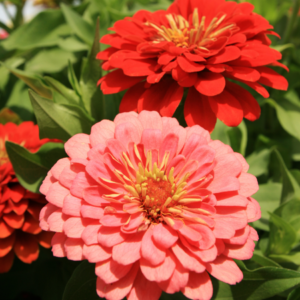
Zinnia Companion Plants – Design Tips for a Harmonious Garden
When planning the layout of your garden, consider the height and spread of each plant to ensure they have enough space to thrive without overcrowding each other. Plant taller sunflowers or cosmos behind your zinnias to create a beautiful backdrop that enhances their colorful blooms.
- Spacing between plants is necessary for optimal growth and airflow.
- Choose plants with complementary colors and textures to create visual interest.
- Include a variety of flowering plants to attract diverse pollinators to your garden.
Companion planting is not only about creating a visually appealing garden but also about fostering a healthy ecosystem where plants support each other’s growth and well-being. By following these design tips and selecting the right companion plants, you can create a vibrant and harmonious garden that will attract pollinators and provide you with joy for seasons to come.
Care and Maintenance for Thriving Zinnias
Essential Zinnia Care Tips
Many gardeners adore zinnias in their gardens for the vibrant colors and the attraction they bring to pollinators. To keep your zinnias thriving, it’s important to provide them with the right care and attention. Make sure to plant them in well-draining soil and in a spot that receives at least six hours of sunlight each day. Water your zinnias regularly, allowing the soil to dry out slightly between watering sessions. Mulching around the plants can help retain moisture and prevent weeds.
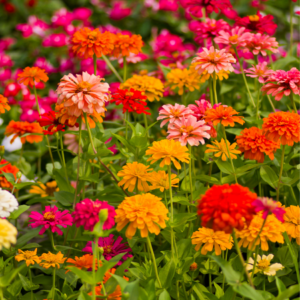
- Well-draining soil is imperative for healthy zinnias.
- Ensure your zinnias get at least six hours of sunlight daily.
- Water zinnias regularly, allowing the soil to dry out between sessions.
- Mulch around your zinnias to retain moisture and suppress weeds.
Assume that by following these care guidelines, your zinnias will flourish and reward you with a profusion of colorful blooms throughout the growing season.
Zinnia Companion Plants – Managing Pests and Problems with Companions
To deal with potential pests and problems that may affect your zinnias, consider planting companion plants that can help repel harmful insects or attract beneficial ones. Marigolds, basil, and nasturtiums are great choices for companions to zinnias. Marigolds can deter nematodes, while basil and nasturtiums can attract pollinators that benefit your zinnias. By incorporating these companion plants into your garden, you can create a more balanced ecosystem that promotes the health and vitality of your zinnias.
Problems like aphids, powdery mildew, and spider mites can pose risks to your zinnias. Keep an eye out for any signs of infestation or disease and take prompt action to address them. Regularly inspecting your plants and practicing good garden hygiene can help prevent pest infestations and ensure the well-being of your zinnias.
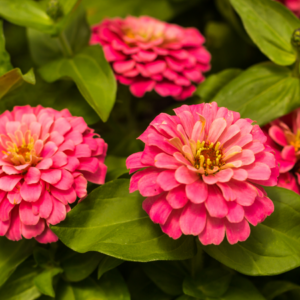
Additional Tips and Tricks for a Stunning Zinnia Garden
Not only are zinnias beautiful flowers to have in your garden, but they also attract pollinators like bees and butterflies. To ensure your zinnia garden is as stunning as possible, here are some additional tips and tricks to consider:
- Watering: Ensure your zinnias receive about 1 inch of water per week, either through rainfall or supplemental watering. Water at the base of the plants to keep the foliage dry and prevent disease.
- Fertilizing: Use a balanced fertilizer once a month to promote healthy growth and vibrant blooms. Avoid over-fertilizing, as this can lead to lush foliage but fewer flowers.
- Deadheading: Regularly remove spent blooms to encourage new flower growth and prolong the blooming season.
- Companion Planting: Pair zinnias with other pollinator-friendly plants like lavender, salvia, and coneflowers to create a thriving ecosystem in your garden.
Watering and Fertilizing Best Practices
For optimal growth and blooming, water your zinnias consistently to keep the soil moist but not soggy. Additionally, fertilize your zinnias with a well-balanced fertilizer to provide crucial nutrients for healthy plants and vibrant flowers.
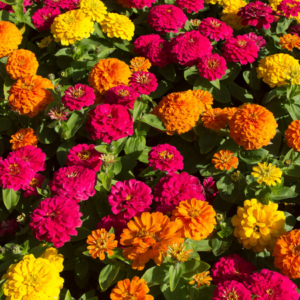
Encouraging Continuous Blooms
Zinnias are known for their prolific blooming habits, but to encourage continuous blooms throughout the season, deadhead spent flowers regularly. This practice not only keeps your garden looking neat but also promotes new flower production.
With proper care and attention, your zinnia garden can be a delightful and colorful addition to your outdoor space. Take the time to follow these tips and tricks, and watch as your zinnias thrive and attract beneficial pollinators.
To wrap up on Zinnia Companion Plants
On the whole, incorporating zinnias into your garden as companion plants can not only add beauty and vibrancy but also attract beneficial pollinators. By following companion planting strategies, such as pairing zinnias with plants like tomatoes, cucumbers, or beans, you can create a healthy and thriving garden ecosystem. To learn more about companion planting and how it can benefit your garden, check out A Guide to Companion Planting to Promote a Healthy Garden. So, why not add some zinnias to your garden this season and enjoy the beauty they bring while supporting pollinators?
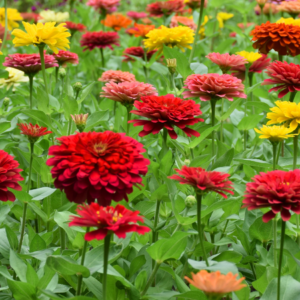
FAQ’s about Zinnia Companion Plants
Q: What are some benefits of using zinnia companion planting strategies in my garden?
A: Zinnia companion planting can attract pollinators, including butterflies and bees, while adding beauty and color to your garden.
Q: When is the best time to plant zinnias in your garden for companion planting?
A: Zinnias should be planted after the last frost in your area, typically in the spring or early summer.
Q: What are some good companion plants to grow alongside zinnias?
A: Some great companion plants for zinnias include marigolds, basil, cosmos, and lavender.
Q: How do zinnias help attract pollinators to my garden?
A: Zinnias produce nectar-rich flowers that attract pollinators like butterflies, bees, and hummingbirds, helping to improve pollination in your garden.
Q: Are zinnias easy to care for when used in companion planting strategies?
A: Yes, zinnias are low-maintenance plants that are easy to grow, making them a great choice for companion planting in your garden.
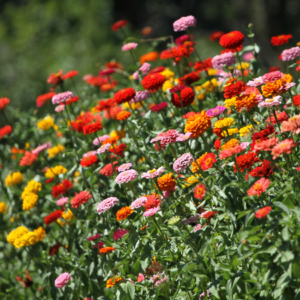
Companion Plants for Karl foerster Grass
A Guide to Growing Melons and Watermelons


